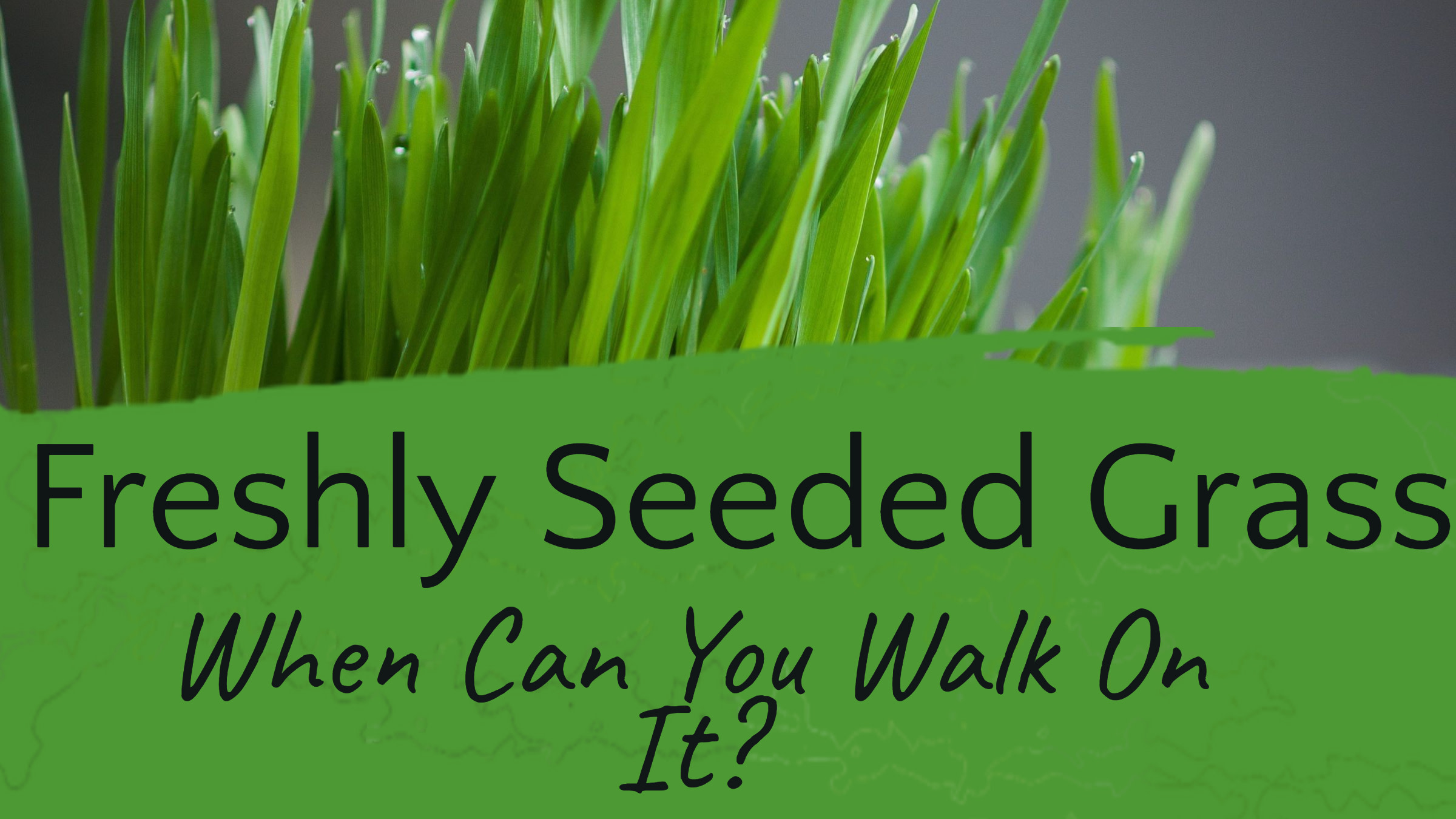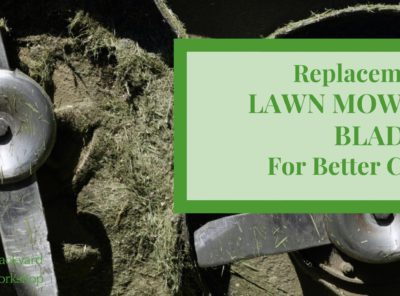How Long After Planting Grass Seed Can You Walk On It Or Mow It?

Timing is crucial for watering, mowing, and walking on the lawn after planting grass seeds in good soil. The right timing creates a lush grass carpet, but mowing too soon or watering too late may have the opposite effect.
We’re here to answer your gardening questions on the best lawn care for fragile grass sprouts. One lush lawn care secret is to wait before mowing the lawn, giving new grass a fair chance to grow to a decent height and strength. I know when the grass starts to sprout across the yard, it’s easy to get excited and eager to fire up the lawn mower – but it’s not yet time. A few things need to happen before new grass in your front or back lawn is ready for mowing.
HOW LONG DOES IT TAKE SEEDED GRASS TO GROW?
How long does it take for new grass to thicken?
It takes about two months for new grass plants to thicken and cover bare patches. The type of grass sprouts varies in germination length, but it takes on average about two weeks. For example, Perennial rye germinates after 5-7 days and is the right height for mowing within three weeks to a month. Carpetgrass, however, takes 2-3 weeks to germinate, and you’ll have to wait with the mower for about two months after seeding. Some turf-grass types like St. Augustustine grow from sod or plugs.
Lawn grass and turf grass need nutrient-rich soil. One way to thicken the grass is lawn fertilizer. Make sure you use starter lawn fertilizer on seedlings that promote healthy root growth. Avoid using lawn fertilizer for established grass on overseeding because the formula might be too strong and burn the sprouts.

When can you cut grass after seeding?
Wait until the grass has strengthened before you mow the lawn. It takes about four weeks for grass seeds to germinate. If you cut too soon, the mower blades and wheels will pull the grass sprouts out of the ground because the seedlings haven’t had enough time to establish a root system. Mowing too soon also results in poor root spread; the lawn mower compacts the soil, and seedlings aren’t strong enough to push through.
HOW DO I WATER MY LAWN FOR THE BEST GRASS?
How soon after cutting grass should you water?
If your lawn needs moisture, water it after you’ve mowed the lawn. The best time to water lawns is early in the morning before the sun is too intense. When watering early in the morning, the ground stays cooler during the day, providing less stress on the grass. If you water late in the day, the water evaporates quickly, and the wind blows it away from the turf. Wet grass is more susceptible to fungus and mildew at night.
How many hours should you water your lawn?
Grass and plant seeds need lots of water to grow. If it is hot, you’ll probably need to water them twice a day; otherwise, daily should be sufficient. Keep the top 1/4 inch of topsoil moist when overseeding; it helps to establish strong roots.
Beautiful lawns need about 1-1.5 inches of water per week. Water established seedlings 2-3 times per week instead of daily. It takes about 20 minutes of watering three times per week to maintain an inch of moist soil. Sweltering days require longer watering to avoid heat stress.
Is it bad to water new grass every day?
No, if you are overseeding or seeding in bare patches. Water heavily after overseeding to wash seeds into the sparse areas. For the next 10-14 days, keep the soil moist by watering daily one inch deep. After germination, water three times per week and for more extended periods for deeper root growth. When the new grass is established, water according to the recommendations for the type of grass planted.
By watering deeply 2-3 times per week, the roots grow deep, making the lawn more drought-resistant and thicker. Daily watering of an established lawn creates shallow grassroots that result in week turf that won’t withstand harsh weather.
WHAT IS THE RIGHT GRASS HEIGHT FOR A HEALTHY LAWN?
Can cutting grass too short kill it?
Yes, if you cut your grass too short, it can die. It may be tempting to cut the lawn short, so you don’t have to mow the lawn that often. However, if you cut new grass too short, you remove most of the photosynthesizing grass leaf blades; the turf drains the energy stored in the roots, leading to starvation.
When cutting grass too short, the established lawn can’t protect new grass seed against germinating weed seeds or heat stress. The soil won’t stay moist without the shade provided by the regular lawn, and the new grass blades are exposed to the air without protection.
WHAT ARE PROPER MOWING TECHNIQUES?
Can I mow after overseeding?
It is better to wait a couple of weeks before you mow after overseeding. As mentioned above, seedlings have a growth period for grass establishment. Wait with the mower until the turf height is about 3-4 inches. Then mow a third of the height each time.
Use the grass clippings as mulch for garden beds or lawns to help protect the yard from heat.
Can you walk on the lawn after overseeding?
No, it would be best if you didn’t walk on any lawns after overseeding. New grass is as fragile a new plants; seedlings need to establish a robust root system in the soil. If you want a lush lawn, then wait until the lawn is about 2-3 inches in height before walking on it.
READY TO MOW?!
With grass blades at the right height, what are you waiting for – it’s time for the following lawn care step.
- Mow high, about a third of the blade height, to encourage deep roots.
- Make sure the blades are sharp to avoid ripping or tearing.
- Take care to maintain 2-3 inches height to avoid invading weeds and compaction.
- Mow in various directions to keep the grass upright; cutting in one direction only results in blades laying down and compacting into the soil.




![The Best Lawn Mowers - Reviewed in [FYear]](https://www.backyardworkshop.com/wp-content/uploads/./lawn-mower-reviews-400x296.jpg)